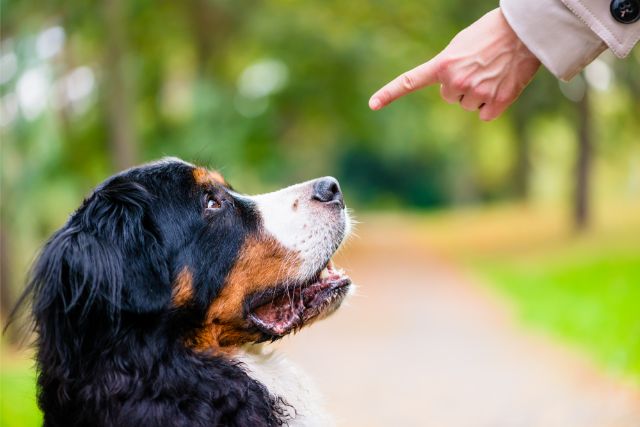When it comes to obedience training for dogs, positive reinforcement has proven to be an effective technique. Positive reinforcement involves rewarding your dog for good behavior, rather than punishing them for bad behavior. This technique can improve your dog’s behavior and strengthen your bond with them. In this article, we will discuss the power of positive reinforcement in obedience training.
Understanding Positive Reinforcement
Positive reinforcement is the act of rewarding your dog for good behavior. Rewards can include treats, verbal praise, and playtime. The key to positive reinforcement is to reward your dog immediately after they perform the desired behavior. This helps your dog associate the behavior with the reward, making it more likely that they will repeat the behavior in the future.
The Benefits of Positive Reinforcement
Positive reinforcement has many benefits for both you and your dog. Some of these benefits include:
1. Improves Behavior
Positive reinforcement can help improve your dog’s behavior. When your dog knows that good behavior results in a reward, they are more likely to repeat that behavior. This can help reduce unwanted behaviors, such as jumping or biting.
2. Builds Trust and Respect
Positive reinforcement can help build trust and respect between you and your dog. When you reward your dog for good behavior, they learn to trust you and see you as a positive influence in their life.
3. Creates a Stronger Bond
Positive reinforcement can create a stronger bond between you and your dog. When you reward your dog for good behavior, they associate you with positive experiences, which can help strengthen your bond.
4. Improves Mental Health
Positive reinforcement can improve your dog’s mental health. When your dog knows that good behavior results in a reward, they feel a sense of accomplishment and satisfaction. This can help reduce anxiety and depression in dogs.
Using Positive Reinforcement in Obedience Training
Positive reinforcement can be used in a variety of obedience training exercises. Here are a few examples:
1. House Training
When house training your dog, use positive reinforcement to reward them for going potty outside. This can help them learn where they should go potty and reduce accidents in the house.
2. Sit Command
To teach your dog the “sit” command, hold a treat above their head and slowly move it towards their back. As their head goes up, their butt will naturally go down. Once they sit, give them the treat and verbal praise.
3. Come Command
To teach your dog the “come” command, start by calling their name and then saying “come.” When they come to you, reward them with a treat and verbal praise.
4. Stay Command
To teach your dog the “stay” command, have them sit and then hold your hand up as a visual cue. Say “stay” and then take a step back. If they stay, reward them with a treat and verbal praise.
Common Mistakes to Avoid
While positive reinforcement can be a powerful tool in obedience training, there are some common mistakes to avoid. These include:
1. Inconsistent Training
Consistency is key when it comes to positive reinforcement. Make sure everyone in your household is on the same page when it comes to training your dog.
2. Using Treats Incorrectly
Treats should be used as a reward for good behavior, not as a bribe. If your dog only listens to you when you have treats, they are not truly learning the behavior.
3. Timing
Timing is crucial when it comes to positive reinforcement. Reward your dog immediately after they perform the desired behavior to reinforce the behavior.
4. Overuse of Verbal Praise
While verbal praise is an important part of positive reinforcement, overusing it can reduce its effectiveness. Instead, save verbal praise for when your dog performs exceptionally well.
5. Punishing Bad Behavior
Positive reinforcement is all about rewarding good behavior, not punishing bad behavior. Punishing your dog for bad behavior can make them anxious or fearful and damage your relationship with them.
Conclusion
Positive reinforcement is a powerful tool in obedience training for dogs. By rewarding your dog for good behavior, you can improve their behavior, build trust and respect, create a stronger bond, and improve their mental health. However, it’s important to use positive reinforcement correctly and avoid common mistakes. With patience and consistency, positive reinforcement can help you and your dog achieve success in obedience training.
FAQs
Is positive reinforcement the only way to train a dog?
No, there are different methods of training dogs. However, positive reinforcement has proven to be an effective and humane way to train dogs.
Can positive reinforcement work for all dogs?
Yes, positive reinforcement can work for all dogs regardless of breed or age. However, it may take longer for some dogs to learn than others.
Can I use positive reinforcement to correct bad behavior?
Positive reinforcement is not designed to correct bad behavior. Instead, it’s about rewarding good behavior to encourage your dog to repeat it.
How often should I use positive reinforcement in training my dog?
Positive reinforcement should be used consistently throughout your dog’s training to reinforce good behavior. However, it’s important to not overuse it and maintain a balance.
Can positive reinforcement be used in combination with other training methods?
Yes, positive reinforcement can be used in combination with other training methods, as long as they are humane and do not involve punishment or fear.
